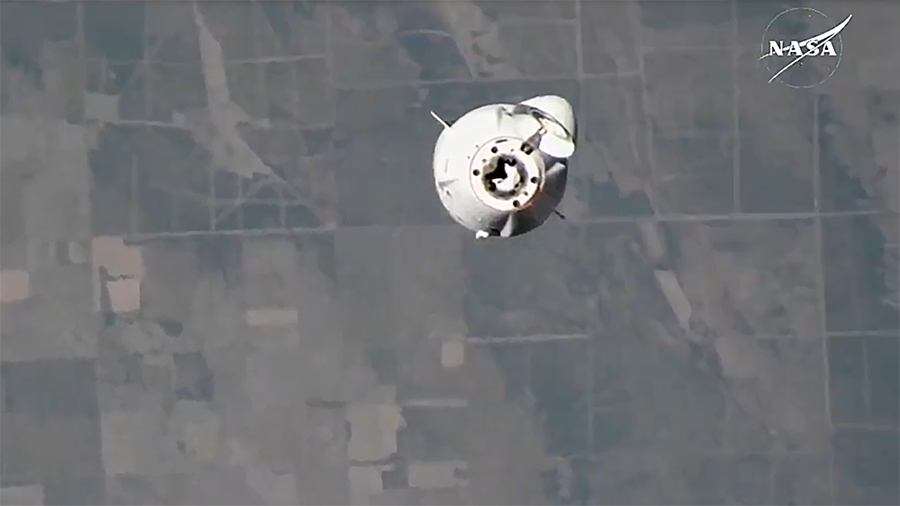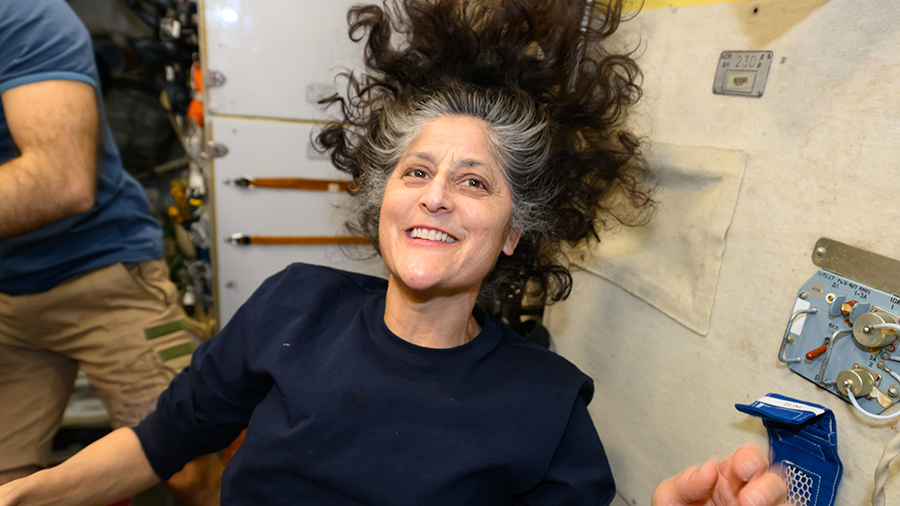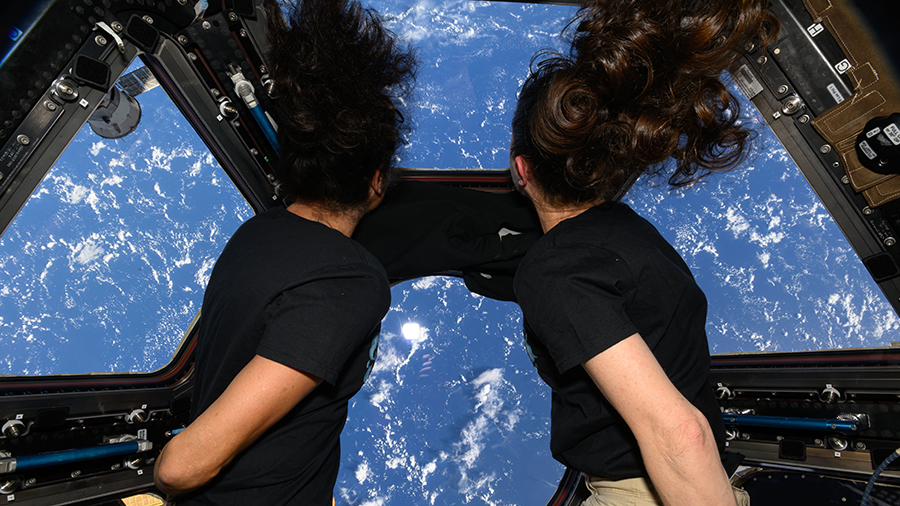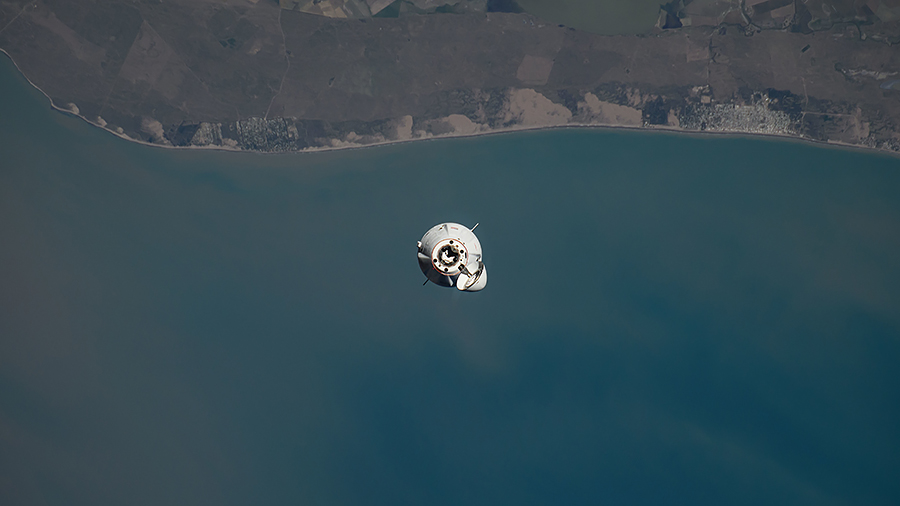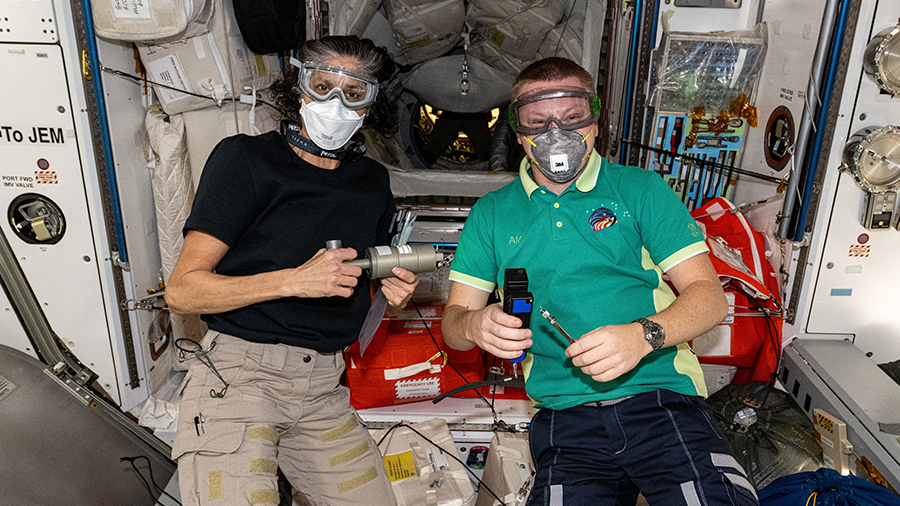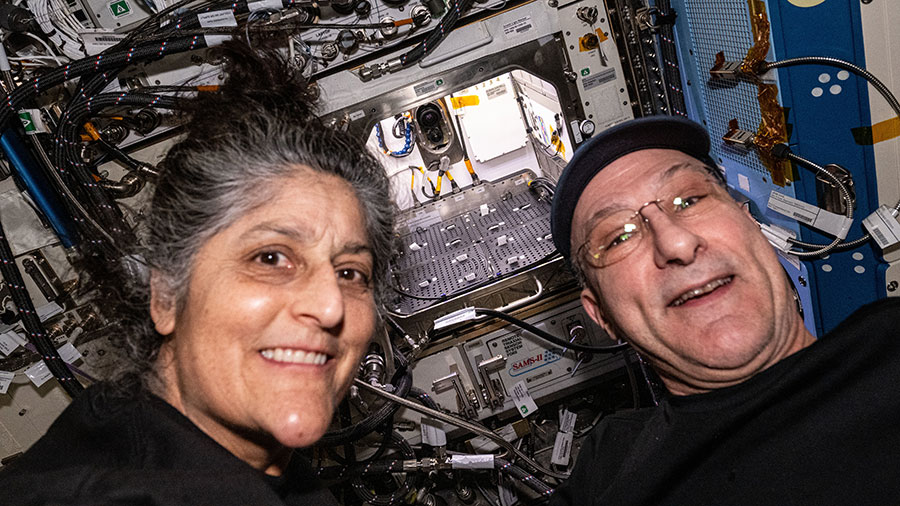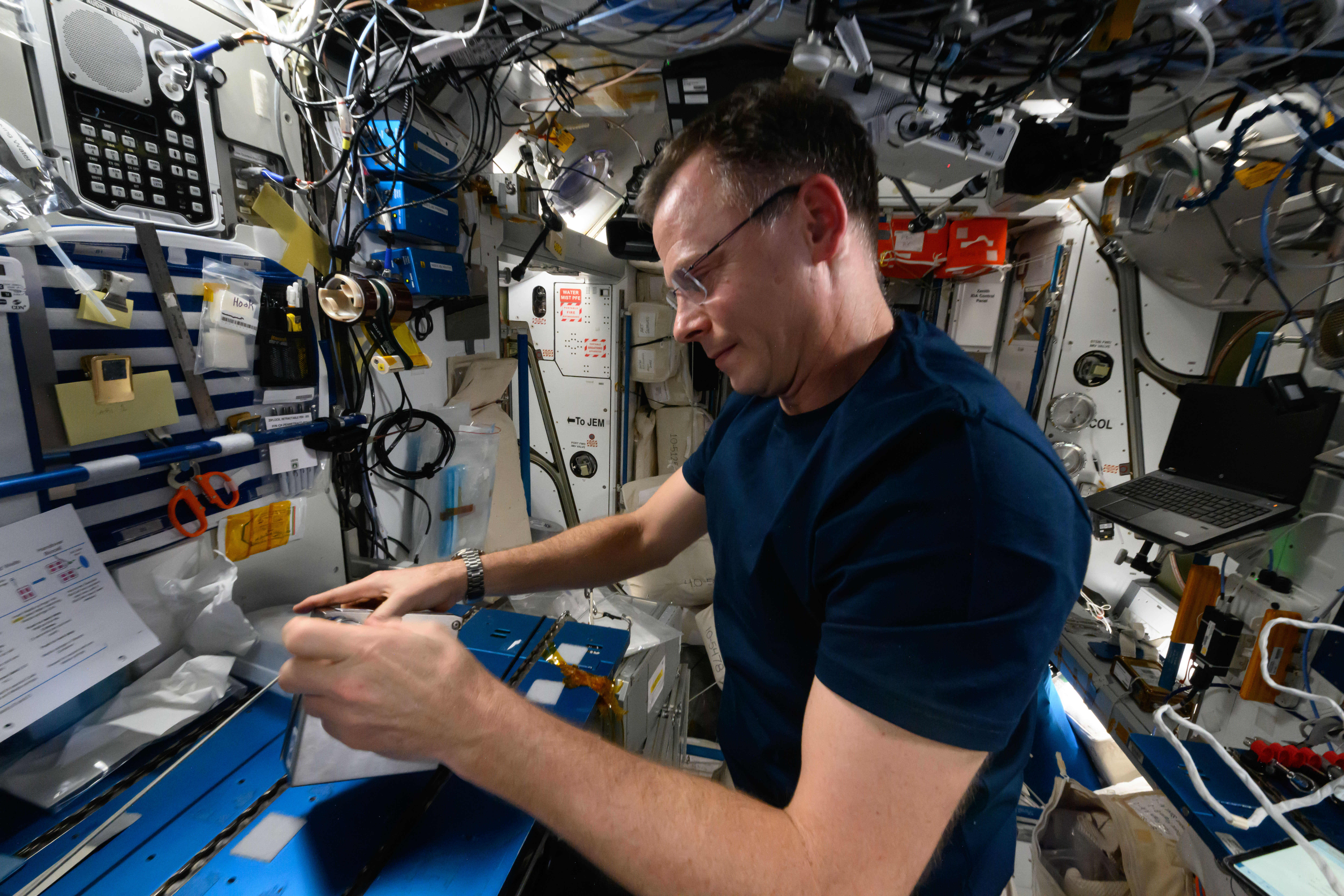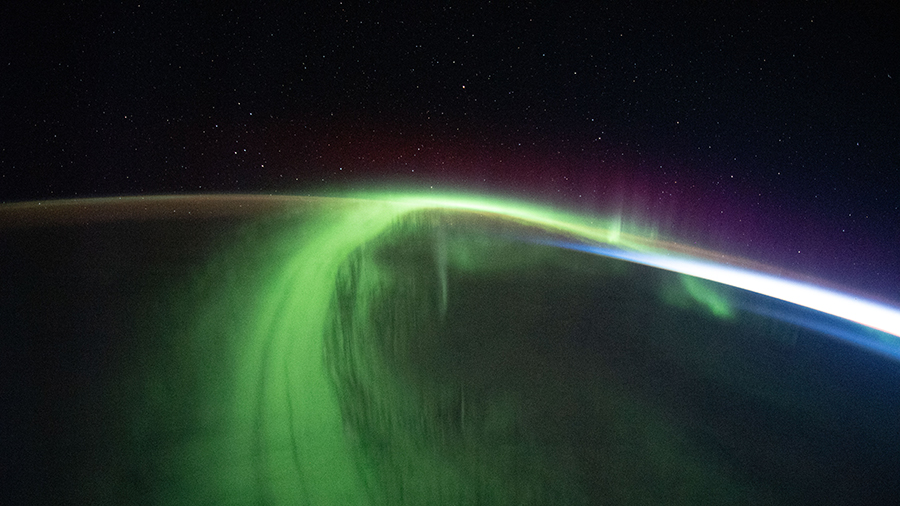
The Expedition 72 crew prepared a science experiment for placement outside the International Space Station and studied space-caused cellular stress and tissue damage on Thursday. Spacewalk preparations are also ongoing to remove and relocate hardware on the orbital outpost next week.
Three NASA astronauts including Commander Suni Williams and Flight Engineers Don Pettit and Butch Wilmore opened up the hatch to the Nanoracks Bishop airlock and readied the removable module for the loading of the Euro Materials Aging (EMA) experiment. On Monday, the Canadarm2 robotic arm will detach Bishop with the EMA inside from the Tranquility module and maneuver it toward the Columbus laboratory module. Next, the EMA will be robotically installed on the Bartolomeo research platform attached to the outside of Columbus.
EMA will expose a variety of materials to the space environment to learn how to improve the development of space hardware and applications for missions to the Moon, Mars, and beyond. The external investigation will operate outside Columbus for about a year.
NASA Flight Engineer Nick Hague continued his cellular immunity research processing blood samples in the Harmony module. He removed the samples from the Kubik research incubator after overnight stowage and spun them inside the Human Research Facility’s centrifuge. Afterward, Hague stowed the blood specimens inside a science freezer then powered down and uninstalled Kubik. Doctors on the ground will analyze the samples to understand the effects of living in space on the human immune system.
All four NASA astronauts relaxed and took a half-a-day off at the end of their shifts on Thursday. The quartet will have a busy day on Friday as they prepare the Bishop airlock and the Euro Materials Aging experiment for their robotic move next week.
Roscosmos Flight Engineers Alexey Ovchinin and Ivan Vagner continued their preparations for a spacewalk planned to begin at 10:10 a.m. EST on Thursday, Dec. 19, for science and robotics hardware transfers. The cosmonauts wore their pressurized Orlan spacesuits and practiced maneuvering to the Poisk airlock where they will exit into the vacuum of space. Fellow cosmonaut and flight engineer Aleksandr Gorbunov joined the duo afterward and reviewed procedures to depressurize and repressurize the airlock when the spacewalkers exit and enter the station.
Ovchinin and Vagner also had time for a cardiac study wearing electrodes and arm cuffs measuring their heart activity and blood pressure. Gorbunov focused on orbital plumbing tasks before the spacewalk reviews. At the end of his shift, he joined his cosmonaut crewmates for a test to learn how international crews and mission controllers from around the world can communicate better.

